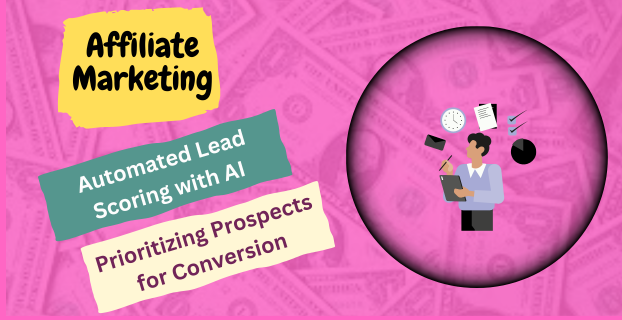Microsoft's Approach To AI: Prioritizing The Human Element

Table of Contents
Responsible AI Development at Microsoft
At the heart of Microsoft's AI strategy lies a deep commitment to responsible AI development. This commitment is embodied in their comprehensive set of AI principles, which emphasize fairness, transparency, accountability, and privacy. These aren't just aspirational goals; they're actively integrated into the development lifecycle of their AI systems. Microsoft invests heavily in tools and initiatives designed to ensure these principles are upheld. For instance, AI for Accessibility leverages AI to improve the lives of people with disabilities, showcasing a tangible commitment to positive societal impact. Similarly, their responsible AI development tools help developers build more ethical and trustworthy AI systems.
- Bias Mitigation: Microsoft actively works to mitigate bias in algorithms through rigorous testing and data analysis. They employ techniques to identify and correct for skewed data that could lead to unfair or discriminatory outcomes.
- Explainable AI (XAI): Transparency is crucial. Microsoft is a strong advocate for explainable AI, striving to make the decision-making processes of their AI systems understandable and auditable. This helps build trust and allows for easier identification of potential issues.
- Robust Auditing and Review: Microsoft's AI systems undergo thorough auditing and review processes to ensure compliance with their ethical principles and to identify any potential problems before deployment.
- Data Privacy and Security: Protecting user data is paramount. Microsoft employs stringent security measures and adheres to privacy regulations to safeguard the data used in training and operating its AI systems.
Human-Centered Design in Microsoft's AI Products
Microsoft's approach to AI isn't just about technological advancement; it's about creating products and services that genuinely improve people's lives. Human-centered design principles are deeply ingrained in their development process. This means putting the user experience and accessibility at the forefront of every decision. This commitment is evident in various Microsoft products, including the accessibility features built into Windows and the AI-powered tools designed specifically to assist people with disabilities.
- User Research and Feedback: User research and feedback are integral to the design process. Microsoft actively solicits user input to ensure that their AI products are intuitive, user-friendly, and meet the needs of diverse users.
- Intuitive and User-Friendly Interfaces: Microsoft strives to create AI applications with intuitive and user-friendly interfaces, making them accessible to a wider range of users regardless of their technical expertise.
- Accessibility Built-In: Accessibility isn't an afterthought; it's a core design consideration. Microsoft designs accessibility features into its AI applications from the ground up, ensuring that they are usable by people with various disabilities.
- Diverse User Needs: Microsoft actively considers the diverse needs and perspectives of its users, ensuring that its AI products are inclusive and cater to a wide range of abilities and backgrounds.
The Role of Collaboration and Partnerships in Microsoft's AI Strategy
Microsoft recognizes that responsible AI development requires collaboration. They actively partner with researchers, governments, and non-governmental organizations (NGOs) to share best practices, develop ethical guidelines, and shape the future of AI. These partnerships are crucial for fostering a more responsible and ethical AI ecosystem.
- Open-Source Contributions: Microsoft contributes significantly to the open-source AI community, sharing its knowledge and tools to promote wider adoption of responsible AI practices.
- Academic Collaborations: They collaborate with leading academic institutions to advance AI research and to explore the ethical implications of AI technologies.
- Industry-Wide Initiatives: Microsoft actively participates in industry-wide initiatives focused on promoting ethical AI governance and best practices.
- Policymaker Engagement: They engage with policymakers to inform the development of responsible AI regulations and to shape the policy landscape surrounding AI.
Addressing the Challenges of Prioritizing the Human Element in AI
While Microsoft is committed to responsible AI, the journey isn't without its challenges. Balancing innovation with ethical considerations requires continuous effort and adaptation. Addressing issues like algorithmic bias and the potential for job displacement requires proactive and multifaceted strategies.
- Algorithmic Bias Mitigation: Ongoing efforts to detect and mitigate algorithmic bias are crucial. This requires constant monitoring, refinement of algorithms, and a commitment to using diverse and representative datasets.
- Workforce Reskilling and Upskilling: Microsoft invests in initiatives to reskill and upskill the workforce, helping individuals adapt to the changing job market impacted by AI.
- Transparency in Communication: Openly communicating the limitations of AI systems is essential to managing expectations and preventing misuse.
- Addressing AI Misuse: Microsoft actively works to address concerns about the potential misuse of AI technologies, collaborating with stakeholders to develop safeguards and mitigation strategies.
Conclusion: The Future of Microsoft's Approach to AI
Microsoft's approach to AI emphasizes a fundamental commitment to responsible and human-centered development. The company's dedication to ethical considerations, collaborative partnerships, and continuous improvement sets a strong example for the broader AI community. The future of AI hinges on our ability to prioritize human values and ensure that these powerful technologies are used for the benefit of all. Learn more about Microsoft's commitment to responsible AI and explore their resources on ethical AI development. Join the conversation on how to prioritize the human element in AI and discover how Microsoft is shaping the future of human-centered AI.

Featured Posts
-
 Untangling Sister Faith And Sister Chance In Andrzej Zulawskis Possession A Lady Killers Podcast Analysis
Apr 27, 2025
Untangling Sister Faith And Sister Chance In Andrzej Zulawskis Possession A Lady Killers Podcast Analysis
Apr 27, 2025 -
 Nebraska Jeweler Aids Nfl Players In Transition A Mc Cook Story
Apr 27, 2025
Nebraska Jeweler Aids Nfl Players In Transition A Mc Cook Story
Apr 27, 2025 -
 Alberto Ardila Olivares Garantia De Gol
Apr 27, 2025
Alberto Ardila Olivares Garantia De Gol
Apr 27, 2025 -
 Wichtige Mitteilung Von Pne Ag Gemaess Wp Hg 40 Abs 1
Apr 27, 2025
Wichtige Mitteilung Von Pne Ag Gemaess Wp Hg 40 Abs 1
Apr 27, 2025 -
 Major Logistics Acquisition Cma Cgm Invests 440 Million In Turkey
Apr 27, 2025
Major Logistics Acquisition Cma Cgm Invests 440 Million In Turkey
Apr 27, 2025
